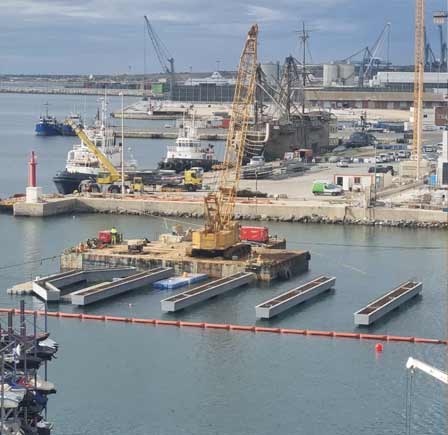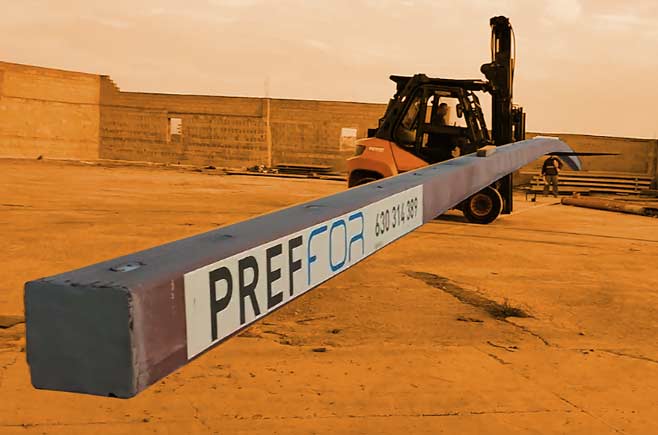A lot of types of UHPC have already been developed worldwide with different mixture compositions, type and amount of fibres, flowability, compressive strength, tensile behaviour, thermal curing, etc. Several standards and recommendations (France, Switzerland) propose their own definition of UHPC. In this post a definition of UHPC is given considering that the most important feature for its classification is not only the compressive strength but algso its ductility and durability properties. Are you interested?
Giving an objective definition of UHPC is not an easy task, as by definition, defining something implies to set up boundaries. And boundaries are difficult to establish in concrete as they probably do not exist. However, they are required if we want to move forward, develop guidelines and delimit responsabilities. So the question is, why putting boundaries here and not there?
Huge dosis of literature and a vast experience studying, producing, testing, manufacturing and designing with UHPC put me in position to propose the following definition, always opened to discussion.
“Ultra-High Performance Fibre-Reinforced Concrete (UHPC) is defined as an hydraulic cement-based composite material, which combines three technologies in concrete: (i) high characteristic compressive strength; (ii) ductile behaviour under tension due to the presence of fibres, which can provide or not a pseudo strain-hardening stress-strain response accompanied by multiple cracking depending on fibre volumetric fraction, fibre aspect ratio, and also fibre distribution inside the structural element; (iii) a special selection of fine and ultrafine aggregates that provides dense particle packing, high durability and certain degree of flowability.”
It may be somehow overly technical if you are unfamiliar with terms that define UHPC behavoiur. Besides, it does not seem to be so specific, too many loose ends. One can wonder, how much higher the compressive strength must be? How much ductile? What about durability properties?
In a simple attempt to clarify all of that, establish boundaries and justify them, the three main features of UHPC are analysed separately in this post: (i) high compressive strength; (ii) material ductile behaviour in tension; and (iii) high material durability.
High compressive strength
Since first AFGC-SETRA recommendations for UHPC published in 2002, the minimum compressive strength for UHPC was set up in 150 MPa. However, there is no justified reason so far for this value. In addition, development of new UHPC applications revealed that, for most of them, the optimum solution to guarantee competitiveness was found in the range of 120 to 150 MPa.
Looking back, one can realise that the term High-Performance Concrete (HPC) was coined in the 1980s to refer to a concrete with a compressive strength between 50 and 120 MPa and with improved durability properties. Being consistent with concrete history, seems adequate to establish the boundary of the word ‘Ultra’ in 120 MPa.
As we will talk in the next section, UHPC must contain fibres to guarantee minimum ductility requirements in tension. Fibres commonly used in UHPC are smooth-straight fibres with a length between 6 mm and 20 mm and a diameter in the range of aroun 0.1 – 0.3 mm. If we want fibres to be effective in concrete, we need a suitable bond between the cementitious matrix and fibres. Using these type of fibres and using a maximum particle size in the cementitious matrix of around 1-2 mm, it can be roughly said that a minimum compressive strength of 120 MPa is required.
These are the three reasons to demand a minimum characteristic compressive strength of 120 MPa for UHPC. Do not forget that everytime we talk about any mechanical property we need to specify under which test setup and specimen it must be obtained. Let’s leave that for another post!
Compressive strength higher than 120 MPa
Material ductile behaviour in tension
Such a high compressive strength concrete requires a minimum material ductility, which is provided by fibres. So fibres are a must in UHPC for structural applications. We cannot design a UHPC structure withouth fibres!! It is too risky!! It is unsafe!!
To ensure this minimum material ductility, French UHPC standard gives the following minimum dutility requirement for UHPC:
The average stress in the stress-crack opening relationship up to a crack opening value of 0.3 mm must be higher than both (i) 40% the average UHPC cracking strength and (ii) 3 MPa
What does it mean? To fully understand the previous condition it is necessary to know what a stress-crack opening relationship is. In a simpler way, it can be said that this relationship describes the tensile behaviour of UHPC once a crack starts growing. As a general rule, the higher the fibre content, the higher the average stress up to a specific crack opening. The previous sentence implies that a minimum content of fibre is required.
Fibres can be used in a wide volumetric fraction range. It commonly varies in the range of 1% to 3% to keep costs low but still ensuring ductile behaviour and low variability on its mechanical resoponse. Despite having been a huge effort on defining tensile properties of fibre concrete by its mechanical behavoiur rather than the amount of fibre used along history, it seems an easy and safe condition to demand a minimum of 80 kg/m3, when steel fibres are used.
UHPC must contain a minimum of 80 kg/m3 steel fibres
Even though the previous rule is not a very rigous one, it can be considered a good approach to satisfy the minimum material ductility requirement in a UHPC whith a compressive strength in the range of 120 to 160 MPa.
High material durability
Raw materials typically used are Portland cement, quartz powder, silica fume, quartz sand (with a grain size not higher than 2 mm commonly), superplasticizer and water, with a water-cement ratio commonly lower than 0.25. Others materials can also be used, such as ground blast furnace slag, fly ash, glass powder, hard ground aggregates, etc.
The low water-binder ratios, a minimum compressive strength of 120 MPa and the special selection of fine and ultra-fine particles ensure a high compacity and low porosity. These two properties in concrete lead to a high matrial durability in UHPC. How ‘high‘ should it be?.
As a first proposal, the French UHPC standard established a set of minimum values of chloride penetration, gas diffusion and water porosity that any concrete which aims to be considered a UHPC should accomplish in a specific test. The following table summarises the minimum values required in UHPC and its comparison to other concretes.

At the end of the day, and despite all conditions required to be considred UHPC, note that UHPC is still concrete and as concrete should be treated. This is not kind of a mysterious material that only a few can make. You can have your own mixture, your own designs!! What are you waiting for?





